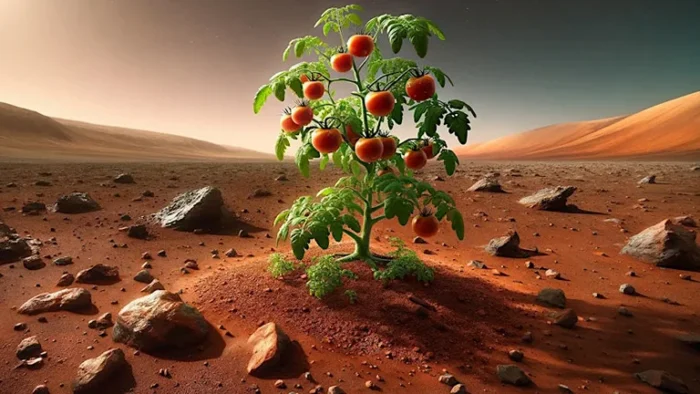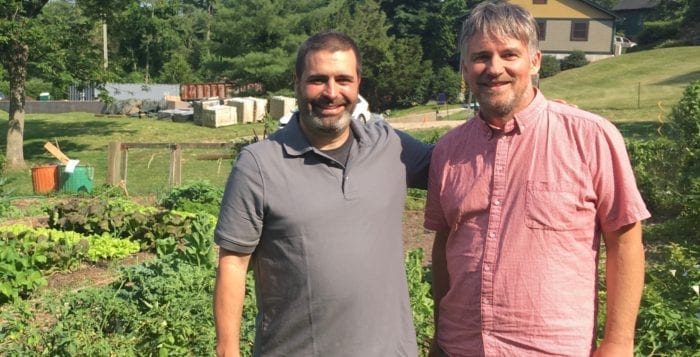By Daniel Dunaief
He works with tomatoes, but what he’s discovered could have applications to food and fuel crops, including corn, rice and wheat.
Using the latest gene editing technique called CRISPR, Zachary Lippman, a professor at Cold Spring Harbor Laboratory, developed ways to fine-tune traits for fruit size, branching architecture and plant shape. Called quantitative variation, these genetic changes act as a dimmer switch, potentially increasing or decreasing specific traits. This could help meet specific agricultural needs. Looking at the so-called promoter region of genes, Lippman was able to “use those genes as proof of principal” for a technique that may enable the fine-tuning of several traits.
For decades, plant breeders have been looking for naturally occurring mutations that allow them to breed those desirable traits, such as a larger fruit on a tomato or more branches on a plant. In some cases, genetic mutations have occurred naturally, altering the cell’s directions. At other times, breeders have sought ways to encourage mutations by treating their seeds with a specific mutagenic agent, like a chemical.
In an article in the journal Cell, Lippman said the results reflect a road map that other researchers or agricultural companies can use to create desirable traits. This article provides a way to “create a new, raw material for breeders to have access to tools they never had before,” he said. Lippman has taken a chunk of the DNA in the promoter region, typically on the order of 2,000 to 4,000 base pairs, and let the CRISPR scissors alter this part of the genetic code. Then, he and his scientific team chose which cuts from the scissors and subsequent repairs by the cell’s machinery gave the desired modifications to the traits they were studying.
Invented only five years ago, CRISPR is a genetic editing technique that uses tools bacteria have developed to fight off viral infections. Once a bacteria is attacked by a virus, it inserts a small piece of the viral gene into its own sequence. If a similar virus attacks again, the bacteria immediately recognizes the invader and cuts the sequence away.
Scientists sometimes use these molecular scissors to trim specific gene sequences in a process called a deletion. They are also working toward ways to take another genetic code and insert a replacement. “Replacement technology is only now starting to become efficient,” Lippman said. Clinical researchers are especially excited about the potential for this technique in treating genetic conditions, potentially removing and replacing an ineffective sequence.
In Lippman’s case, he used the scissors to cut in several places in the promoter regions of the tomato plant. Rather than targeting specific genes, he directed those scissors to change the genome at several places. When he planted the new seeds, he explored their phenotype, or the physical manifestation of their genetic instructions. These phenotypes varied along a continuum, depending on the changes in their genes.
By going backward and then comparing the genes of the altered plants to the original, he could then hone in on the precise changes in the genetic code that enabled that variation. This technique allows for a finer manipulation than turning on or off specific genes in which an organism, in this case a plant, would either follow specific instructions or would go on a transcriptional break, halting production until it was turned on again.
At this point, Lippman has worked with each trait individually but hasn’t done quantitative variation for more than one at a time. “The next question,” he said, “is to do this multitargeting.” He will also use the tool to study how genes are instructed to turn on and off during growth, including exploring the levels and location of expression.
Lippman is talking with agricultural and scientific collaborators and hopes to go beyond the tomato to exploring the application of this approach to other crops. He is working with Dave Jackson, who is also a professor at Cold Spring Harbor Laboratory, on applying this model to corn.
The scientific duo has known each other for 20 years. Jackson taught his collaborator when Lippman was a graduate student at Cold Spring Harbor Laboratory and Jackson was chair of his thesis committee.
They have worked together on and off since Lippman became a faculty member about nine years ago. Last year, the two received a National Science Foundation genome grant to work on using CRISPR to study the effect of changes in promoter regions in their respective plant specialties.
“Unfortunately for us, tomato has a faster life cycle than corn, but we hope to have some results in corn this fall,” Jackson explained in an email. Lippman hopes to continue on the path toward understanding how regulatory DNA is controlling complex traits. “We can use this tool to dissect critical regulatory regions,” he said. “When we create this variation, we can look at how that translates to a phenotypic variation.”
Lippman said he is especially excited about the fundamental biological questions related to plant growth and development. When other scientists or agricultural companies attempt to use this approach, they may run into some challenges, he said. Some plants are “not transformable [genetically] easily.” These plants can be recalcitrant to plant transformation, a step sometimes needed for CRISPR gene editing. Still, it is “likely that CRISPR will work in all organisms,” he said.
Lippman hopes others discuss this technique and see the potential for a system that could help to customize plants. “My hope and my anticipation is that people all over the world will look at this paper and say, ‘Let’s start to try this out in our own systems.’ Hopefully, there will be a grass roots effort to import this tool.”






